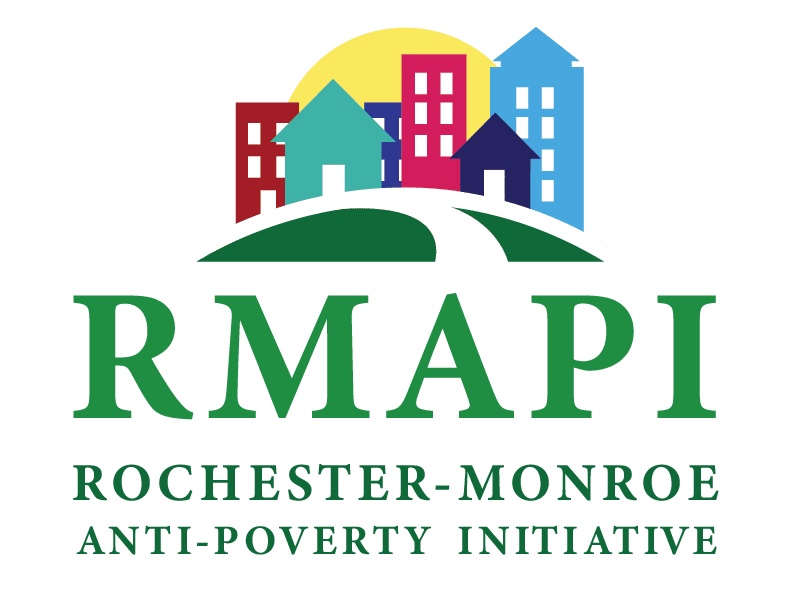Ending Poverty
Understanding Poverty in Rochester
The poverty statistics for the City of Rochester are appalling. Almost one-third of the population lives below the poverty line. Of these, half live in extreme poverty— meaning that the household income is half of the federal poverty level. Most shocking is the fact that one out of every two children in Rochester lives in poverty.
Our Systems Change Goals
The RMAPI Collective has developed a set of systems outcomes and goals that define the work of our Unity Agenda. We looked at the barriers to upward mobility in our communities, collected input from content and context experts, and invited learnings from across the country. These statements reflect the visionary systems changes that we want to see, and what it will look like when our goals are achieved.
We envision a future where everyone…
Our decisions and actions will center those who have been historically disadvantaged by racism, trauma and community disinvestment.
A war on poverty.
More than 50 years after President Lyndon Johnson declared the War on Poverty, Rochester, New York faces a crisis. Among comparably-sized U.S. cities, Rochester has the highest rate of childhood poverty, the highest rate of extreme poverty, and the second-highest rate of poverty in the nation.
The poverty statistics for Monroe County, especially in the City of Rochester, are appalling. Almost one third of the population lives below the poverty line. Of these, half live in extreme poverty—meaning that the household income is half of the federal poverty level. But most shocking is the fact that one out of every two children in Rochester lives in poverty.
A 2013 report by the Rochester Area Community Foundation and ACT Rochester served as a wake-up call to Rochester and Monroe County’s growing poverty and highlighted the concentrated, multi-generational nature of the issue in the city. In the area known as “The Crescent,” more than 60% of residents live in poverty. This extreme concentration of poverty manifests itself in limited local employment, housing blight, food deserts and the isolation of the residents of these neighborhoods.
Poverty rates are on the decline in Rochester.
The Rochester-Monroe Anti-Poverty Initiative first brought community members together in 2015, the goal was to address theroot causes of poverty—especially the structural racism that intentionally kept so many of Rochester’s residents trapped in a nearly inescapable cycle of poverty.
The coalition aimed to break down and rebuild systems that perpetuate poverty, and has already helped to turn the tide on poverty in Rochester. A report from IBM in 2015 stated that without significant changes, the poverty rate in Rochester would continue to grow and that by 2028, the number of people in poverty would exceed the total populationof those with jobs. Since that report was first published, the once-rapid rate of growth in poverty in Rochester was firstslowed and then reversed. In the latest report from the U.S. Census, the poverty rate for the most recent five-year period decreasedby nearly 10 percent
14% of us within the nine-county region are experiencing the challenges, barriers, and negative effects of poverty. But this poverty is not evenly distributed.
live in poverty, compared to 10% of white people.
Resources on Poverty in Rochester
- SPECIAL REPORT: POVERTY AND THE CONCENTRATION OF POVERTY IN THE NINE-COUNTY GREATER ROCHESTER AREA (ACT ROCHESTER 2013)
- BENCHMARKING ROCHESTER’S POVERTY: A 2015 UPDATE AND DEEPER ANALYSIS OF POVERTY IN THE CITY OF ROCHESTER (ACT ROCHESTER 2015)
- ROCHESTER, USA SMARTER CITIES CHALLENGE REPORT (IBM 2015)
- POVERTY AND SELF-SUFFICIENCY INTHE NINE-COUNTY GREATER ROCHESTER AREA (ACT ROCHESTER 2016)
- PROGRESS REPORT: A ROADMAP FOR CHANGE (RMAPI 2015)
- RMAPI COMMUNITY CONCERNS ASSESSMENT (2020)
